A series of measures, including the country's first set schedule for cargo carriers, has improved service quality and boosted efficiency. Luo Wangshu reports.
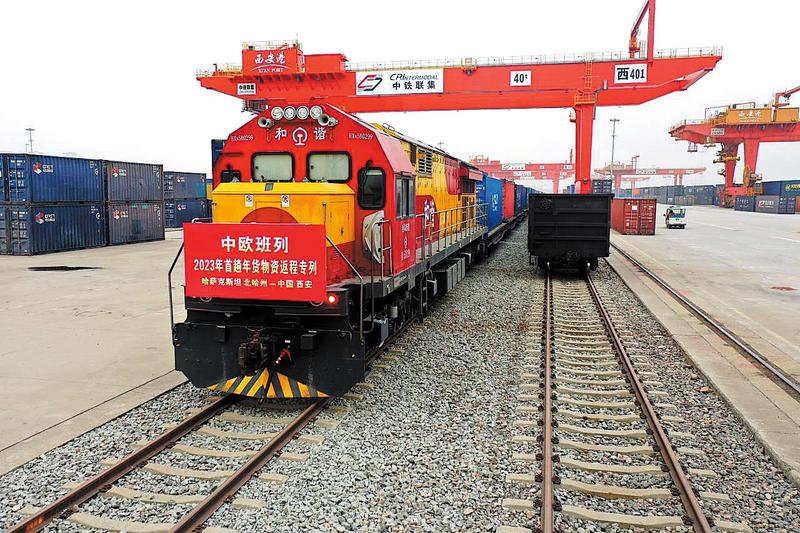 A China-Europe freight train loaded with 1,300 metric tons of flour from Kazakhstan pulls into a railway station at Xi'an in Shaanxi province on Jan 13, marking the arrival of the first such train to cater for Spring Festival shopping in the city this year. (MA ZEXU / FOR CHINA DAILY)
A China-Europe freight train loaded with 1,300 metric tons of flour from Kazakhstan pulls into a railway station at Xi'an in Shaanxi province on Jan 13, marking the arrival of the first such train to cater for Spring Festival shopping in the city this year. (MA ZEXU / FOR CHINA DAILY)
Wu Jingchun has been working as chief dispatcher at one of China's most important freight railway stations for 13 years.
The 58-year-old is not only a witness of, but also a participant in, the work of the freight trains that link China and Europe.
"One of the station's priorities is to make sure that China-Europe freight trains can pass safely and quickly through the station and continue their journey," said Wu, who works at the Fengtai West Railway Station in Beijing.
After a cargo carrier, such as a China-Europe freight train, starts its journey, it stops at dedicated stations — Fengtai West is one of them — for a number of reasons, including: changing drivers; inspections; recoupling and sorting work; and replenishing water stocks.
Fengtai West has the largest marshaling yard in northern China, boasting a complicated fan-shaped network of tracks and switches where railway cars can be sorted and made into trains that will head in different directions.
There are intertwined railway tracks and countless engines waiting to be coupled. Inspection workers walk through the trains and examine the status of each car to ensure that none has been damaged during their journey.
Freight trains from all over China gather at Fengtai West, going through the process of inspections, separating cars and changing engines in the classification yard.
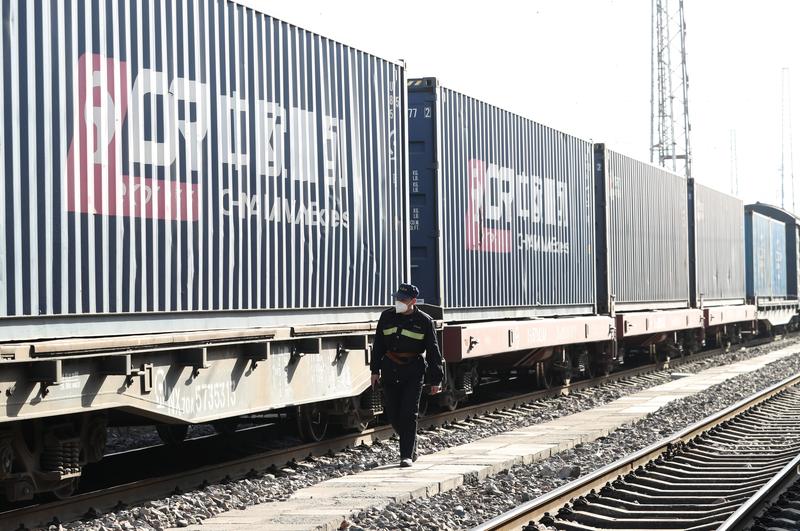 A railway worker inspects a China-Europe freight train at the Fengtai West Railway Station in Beijing last month. (ZOU HONG / CHINA DAILY)
A railway worker inspects a China-Europe freight train at the Fengtai West Railway Station in Beijing last month. (ZOU HONG / CHINA DAILY)
When the trains are ready, railway workers see them off and wave flags to wish them a good journey.
Wu noted that an increasing number of freight trains linking China and Europe have passed through the station in recent years. During busy periods, he handles six or seven a day.
Most of those trains travel west from the northern port city of Tianjin along the route of the Beijing-Shanghai Railway. They stop at Fengtai West for inspection before continuing their journey, leaving China via the Ereenhot border crossing in the Inner Mongolia autonomous region. Such trains also enter China at the crossing.
Since 2021, more than 2,000 China-Europe freight trains carrying daily necessities, food, automobile parts, epidemic control supplies and other items have passed through Fengtai West, heading for Mongolia, Russia and Europe. By the beginning of this year, more than 200 China-Europe freight trains had passed through the station.
Wu is just one of many railway employees working to improve the efficiency of the network.
"To improve efficiency, we prioritize the handling of China-Europe freight trains so they can complete their requirements at Fengtai West as quickly as possible," he said.
He added that it takes about 60 minutes for such trains to finish all the tasks before leaving the station.
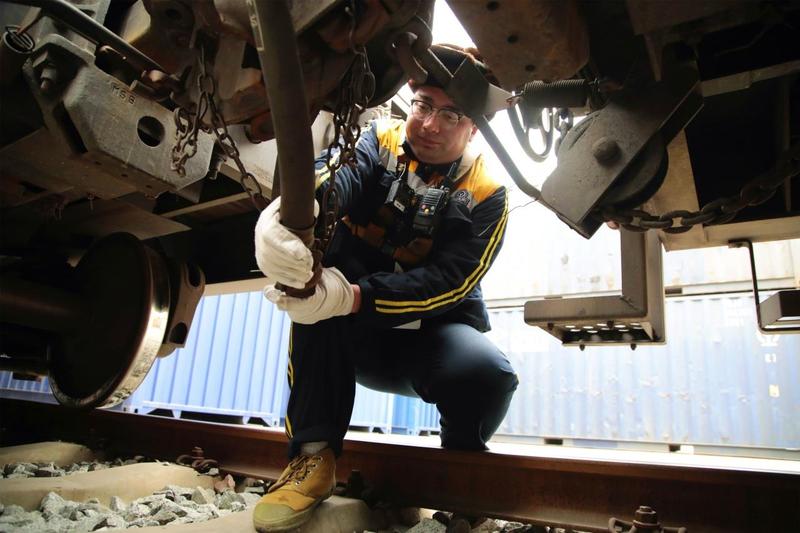 After the arrival of the first China-Europe freight train in Xi'an this year, a member of a shunting team at the Xi'an Guojigang Railway Station, Shaanxi province, separates the carriages to ensure that the goods will be available to local consumers as quickly as possible. (MA ZEXU / FOR CHINA DAILY)
After the arrival of the first China-Europe freight train in Xi'an this year, a member of a shunting team at the Xi'an Guojigang Railway Station, Shaanxi province, separates the carriages to ensure that the goods will be available to local consumers as quickly as possible. (MA ZEXU / FOR CHINA DAILY)
Strategic corridor
China has been promoting the operation of China-Europe freight trains to ensure the secure, stable and smooth operation of the international supply chain.
During the COVID-19 pandemic especially, the trains, loaded with electronic goods, mechanical parts and daily necessities, departed from cities across China for Poland, Germany and other European countries.
They have played an important role as a strategic corridor between China and Europe.
Last year, the national railway network decided to provide services for the high-quality development of the Belt and Road Initiative, achieving remarkable results, according to China State Railway Group, the national railway operator.
Last year, 16,000 freight trains linking China and Europe operated in both directions, a year-on-year rise of 9 percent. The trains carried 1.6 million containers, up 10 percent year-on-year. In 2020, the trains made 12,400 such trips, carrying more than 1.13 million goods containers.
Since 2011, when the first China-Europe freight train departed from Chongqing and headed to Duisburg, Germany, the service has developed significantly, gradually becoming a calling card for transportation between China and Europe.
The service currently links 108 cities in China with 208 cities in 25 countries. In the past decade, more than 65,000 such trains have operated, carrying 6.04 million containers, China State Railway Group said.
This year, the number of China-Europe freight trains continues to rise. Last month, more than 1,000 China-Europe freight trains left China via landports in the Xinjiang Uygur autonomous region.
Among them, 497 trains passed through the Alataw Pass Station carrying 1.11 million metric tons of cargo, a year-on-year rise of 12.8 percent, while 594 China-Europe freight trains passed through the station at Horgos Port carrying 818,000 tons of cargo, up 26.8 percent from the same month last year.
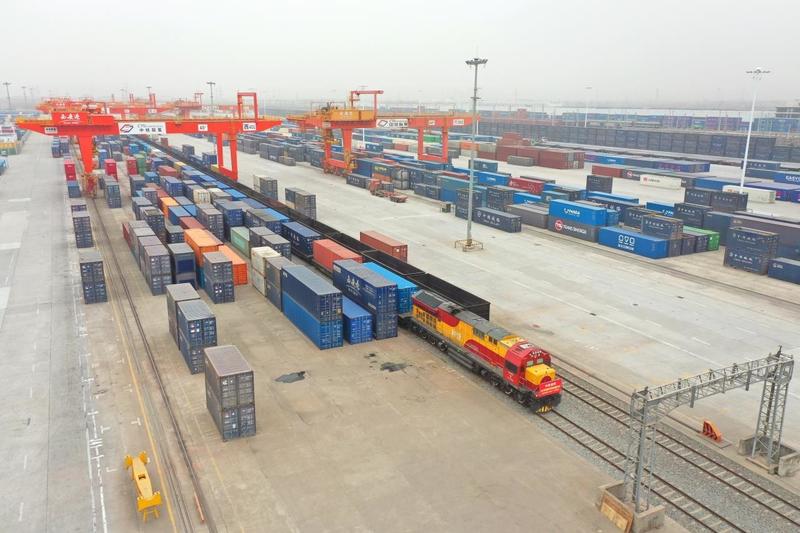 After being unloaded, the cargo awaits transportation to distribution centers. (MA ZEXU / FOR CHINA DAILY)
After being unloaded, the cargo awaits transportation to distribution centers. (MA ZEXU / FOR CHINA DAILY)
Quantity, quality
As the number of freight trains steadily rises, more attention is being paid to improving efficiency and the quality of service.
Last month, China Railway Urumqi Group, which operates services in Xinjiang, adjusted the transportation plan for the China-Europe freight trains to provide holiday cover — including receiving and sorting cargo carriers — during the Spring Festival break so the trains could remain operational 24 hours a day.
The operator has improved cooperation with local customs authorities to employ digital services that allow trains to obtain faster customs clearance, improving efficiency and reducing the time freight trains wait at the border. As a result, the clearance time for outbound China-Europe freight trains at Alataw Pass has been reduced to five hours, the group said.
The moves have also promoted cooperation with railway authorities in neighboring Kazakhstan, improving tailored transportation arrangements and capacity.
Based on the operations and reloading capacities of stations in China and Kazakhstan, Alataw Pass has adjusted its working practices to sort different types of cargo and also arranged for delivery trucks to collect the goods when the trains arrive, according to Zhang Bin, an official at the station.
He also noted that the station has handled about 16 China-Europe freight trains every day recently.
Moreover, the customs department at Alataw Pass has set up a green channel for China-Europe freight trains to improve efficiency.
"We have closely cooperated with the railway operator to share information and improve service quality, boosting efficiency for the trains to be cleared by customs," said Dong Jianjiang, a customs official at Alataw Pass.
He added that the collaboration will allow more businesses to enjoy the benefits the service offers.
Holiday schedule
Amid China's annual Spring Festival travel rush, which this year ran from Jan 7 to Wednesday, the surge in passenger services and customer numbers usually puts more pressure on freight transportation as railway capacity becomes overwhelmed.
However, this is not the case for China-Europe freight trains. On Jan 19, a 54-car train loaded with food, beverages and daily commodities left Tianjin and headed to Mongolia and Russia. It was scheduled to arrive at its final destination within four or five days.
On Jan 13, a China-Europe freight train loaded with 1,300 tons of flour from Kazakhstan arrived in Xi'an, capital of Shaanxi province, as the first train to cater for Spring Festival shopping in the city this year.
"We took the initiative to connect with customers and be aware of the amount of cargo and its arrival details in advance so we could better prepare vehicles, routes and staff. This improved the efficiency of the operation of China-Europe freight trains," said Bai Kuanfeng, an official at the Xi'an Guojigang Railway Station, a freight hub in the city.
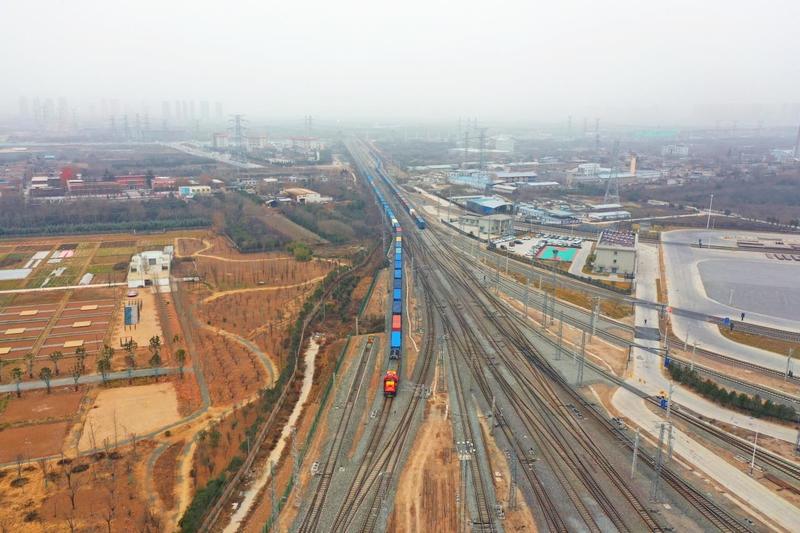 A China-Europe freight train carrying agricultural produce arrives at Xi'an Guojigang station in January. (MA ZEXU / FOR CHINA DAILY)
A China-Europe freight train carrying agricultural produce arrives at Xi'an Guojigang station in January. (MA ZEXU / FOR CHINA DAILY)
Improved service
Since last year, the station has operated a set schedule for China-Europe freight trains. Unlike regular cargo carriers, the trains adhere to a set schedule along the entire route, allowing customers to calculate journey times between cities, thus improving service quality.
To boost competitiveness and offer a more stable schedule, railway operators and service providers from seven countries, including China and Germany, have drawn up a coordination plan to manage set schedules, China Railway Container Transport Corp said.
Meanwhile, at the beginning of last year, China State Railway Group started formulating schedules along four routes between China and Europe.
After several rounds of discussions with railway operators and service providers in countries along the routes — including Kazakhstan, Russia, Belarus, Poland and Germany — the first set schedule for the China-Europe freight train service between Xi'an and Duisburg was completed in October. Trial operations began along the route on Oct 26.
As the service provider, China Railway Container Transport Corp has played an important role in ensuring the smooth operation of the trains.
In China, the company provides containers and loading plans, inspects freight notes and assists with the handling of customs.
It also works with railway operators in the provinces of Shaanxi and Gansu, as well as Xinjiang, to ensure that the trains follow the set schedule in China.
When the trains leave the country, the company conducts real-time monitoring and offers the information to local railway operators and service providers.
The next step will be to develop more routes with set schedules to improve service quality, which will better support the smooth operation of the international supply chain, the company said.
The improvement in the service matches a development plan for China-Europe freight trains devised by China State Railway Group.
"The company should play a leading role in the international cooperation mechanism and in China's Domestic Transport Coordination Commission to better organize these trains, thereby improving cooperation, enhancing the corridor's transportation capacity and boosting service quality," said Liu Zhenfang, president of CSRG, at the company's annual conference last month.
Contact the writer at luowangshu@chinadaily.com.cn


